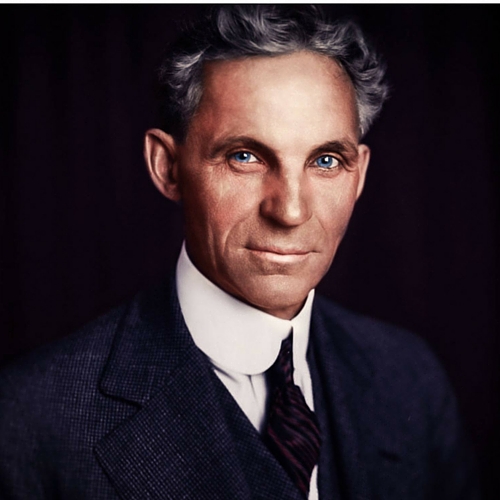Henry Ford
From the humble beginnings of a boy who liked to tinker and take things apart, Ford went on to become a machinist apprentice and later served as Thomas Edison’s chief engineer. He was a man who had a vision for creating an automobile that the common person could afford. In his two years with the Edison Illuminating Company, he made enough money to start his career as an automaker. Ford’s first auto company was a failure. The vehicles were of decent quality, but he could not find a way to make them affordable. In partnership with C. Harold Willis, Ford developed a new vehicle and formed the Ford Motor Company in 1903.
Although the assembly line was highly efficient, it was boring work and led to a high turnover of employees and constant retraining. To change the equation, Ford’s outside-of-the-box thinking came up with a solution. He doubled his employee’s wages. The effect was far reaching: higher retention of employees, less retraining, and higher morale. Further, with this increase of wages, his own employees could now afford to buy one of the automobiles they helped to produce. What a true stroke of genius!
Henry Ford’s affordable vehicles changed the face of America. People moved out of big cities, and the national highway system was born. Other auto makers and companies were forced to raise wages. Ford’s moving assembly line and mass production techniques and principles have been applied with great success by many other industries. Ford was not an overnight sensation; it took years for him to realize his dream of making an automobile a blue collar worker could afford. Henry Ford—a Southpaw who embraced his creativity and watched his vision become reality. Creativity and genius exist in the right hemisphere of the brain, and Henry Ford exemplifies what a right-brained, left-handed person can achieve!
- Made the automobile affordable to the masses
- Perfected the moving assembly line
- Lowered his prices instead of maximizing profit
- Taught America how to increase efficiency and lower costs
- Doubled his employees pay while others were cutting wages
- Broke control of the Seldon patent that held the automotive industry hostage
- Was an early pioneer in advertising, and is credited with creating the “advertising blitz”
Inventions:
- Over 150 patents, most in automotive engineering
- V-8 engine
- Charcoal briquettes

